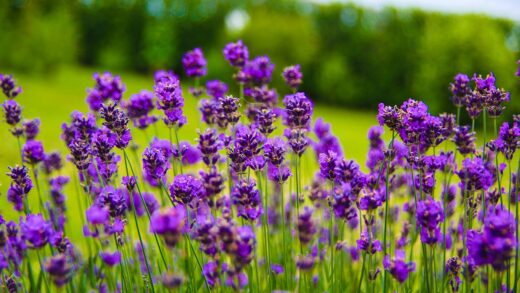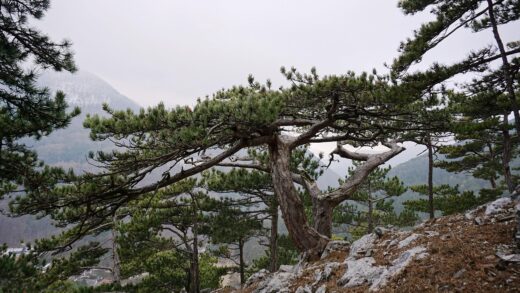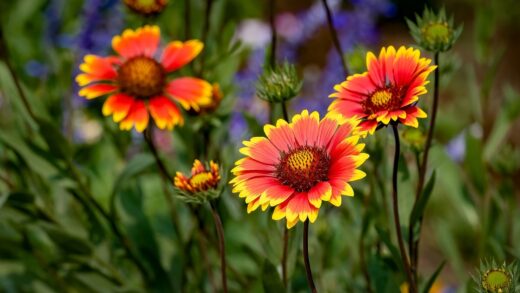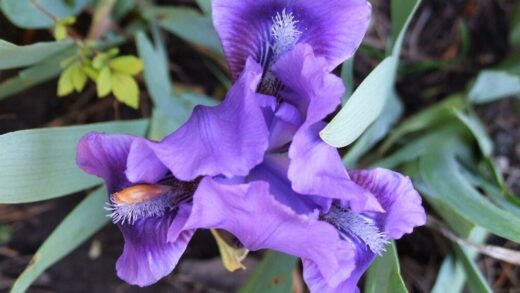Water is the lifeblood of any tree, and for the sweet chestnut, understanding its specific water requirements throughout its life cycle is fundamental to achieving vigorous growth and a successful harvest. While mature trees are known for their resilience, their need for water fluctuates significantly from their juvenile stage to full maturity, and from the beginning of the growing season to the critical period of nut development. Effective irrigation is not merely about providing water, but about applying it intelligently—at the right time, in the right amount, and using the right methods to ensure every drop is used efficiently. Mastering the art of watering is a cornerstone of responsible and productive sweet chestnut cultivation.
Water needs of a young tree
The first few years of a sweet chestnut’s life are the most critical in terms of water requirements. A newly planted sapling has a limited and developing root system that is not yet capable of reaching deep into the soil profile to find moisture. This makes it highly susceptible to drought stress, which can stunt its growth or even be fatal. During the first two to three growing seasons, the young tree relies entirely on the grower to provide consistent and adequate moisture to the root zone to fuel its rapid development and establishment.
The goal when watering a young tree is to provide deep, thorough soakings rather than light, frequent sprinkles. Deep watering encourages the roots to grow downwards in search of moisture, leading to a stronger and more drought-resilient root system for the future. A good rule of thumb is to apply enough water to moisten the soil to a depth of at least 30 to 45 centimeters. This typically translates to around 40 to 60 liters of water per tree, per application, depending on the soil type. Sandy soils will require more frequent watering than clay soils, which retain moisture for longer.
The frequency of irrigation for a young tree depends heavily on weather conditions and natural rainfall. During a typical temperate summer, a deep watering once every 7 to 10 days may be sufficient. However, during periods of intense heat and no rain, it may be necessary to water as often as twice a week. The best way to determine if a tree needs water is to check the soil moisture directly. Digging down a few inches near the edge of the root ball will reveal if the soil is dry and in need of irrigation.
It is also crucial to avoid overwatering, as sweet chestnuts are very intolerant of waterlogged conditions. Soil that is constantly saturated deprives the roots of oxygen, leading to root rot and the potential death of the tree. This is why well-draining soil is a prerequisite for planting. The soil should feel moist after watering, but should not be a muddy puddle. Allowing the top few inches of soil to dry out between waterings is a good practice to ensure the roots are getting the oxygen they need to function properly.
More articles on this topic
Irrigation for mature, established trees
Once a sweet chestnut tree is well-established, typically after three to five years, its root system will have explored a large volume of soil, making it much more self-sufficient and drought-tolerant. In many climates with regular rainfall, a mature tree may require no supplemental irrigation at all, thriving on natural precipitation alone. Its deep and extensive roots can access water reserves far below the surface, allowing it to withstand normal summer dry spells without significant stress. This resilience is one of the reasons it is such a long-lived and successful species.
However, even mature trees have their limits and can benefit from irrigation during specific, critical periods. The most important time is during the summer, from July to early September, when the nuts are developing and filling out. A severe drought during this phase can have a significant impact on the harvest, resulting in a large number of empty burrs, smaller nuts, or premature nut drop. Providing deep, supplemental watering during prolonged dry spells at this time can dramatically improve the quality and quantity of the yield.
Monitoring the tree and the environment is key to deciding when to irrigate a mature specimen. Signs of water stress in a sweet chestnut include wilting or drooping leaves during the hottest part of the day, a slight yellowing or browning of the leaf margins, and premature leaf drop. Rather than waiting for these symptoms to appear, which indicate that stress is already occurring, it is better to monitor soil moisture and weather forecasts. If several weeks have passed with high temperatures and no significant rainfall, a deep, slow soaking is a wise preventative measure.
The amount of water required to irrigate a large, mature tree is substantial. The goal is to moisten the soil under the entire canopy, extending out to the dripline, where the most active feeder roots are located. A slow-delivery system, such as a soaker hose spiraled under the canopy or a drip irrigation system, is far more effective than a standard sprinkler. These methods apply water directly to the soil, minimizing evaporation and ensuring deep penetration into the root zone over several hours.
More articles on this topic
The impact of soil type on watering
The type of soil in which a sweet chestnut is planted has a profound impact on its water requirements and the irrigation strategy needed. Soil texture—the relative proportion of sand, silt, and clay particles—determines its water-holding capacity and drainage rate. Understanding the characteristics of the specific soil on site is essential for developing an efficient and effective watering routine that keeps the tree healthy without wasting water or creating harmful conditions.
Sandy soils, with their large particle sizes, have excellent drainage but a very low water-holding capacity. Water moves through them quickly, and they can dry out rapidly, especially on hot, windy days. Trees planted in sandy soil will require more frequent watering than those in heavier soils, although the amount of water applied at one time may be less. The challenge is to keep the root zone consistently moist without the water draining away before the tree can absorb it. Adding organic matter to sandy soils can significantly improve their ability to retain moisture.
Clay soils are the opposite of sandy soils, consisting of very fine particles that can hold a large amount of water. However, this high water-retention capacity comes with the downside of slow drainage and a tendency towards compaction. The risk of overwatering and creating anaerobic, waterlogged conditions is much higher in clay soils. When irrigating trees in clay, it is crucial to apply water slowly to allow it to be absorbed rather than run off, and to allow for longer intervals between waterings to let the soil partially dry and allow oxygen to reach the roots.
Loam soils, which have a balanced mixture of sand, silt, and clay, are considered ideal for growing sweet chestnuts and most other plants. They offer the best of both worlds: good water-holding capacity combined with adequate drainage and aeration. Trees in loamy soil are more forgiving when it comes to irrigation, as the soil provides a buffer against both drying out too quickly and becoming waterlogged. Even in these ideal conditions, however, the basic principles of deep, infrequent watering remain the most effective approach to promoting a healthy root system.
Efficient irrigation methods
Choosing an efficient irrigation method is important for conserving water, saving time, and ensuring the health of the sweet chestnut tree. The goal is to deliver water directly to the root zone with minimal loss to evaporation, runoff, or wind drift. For this reason, low-pressure, slow-application systems are vastly superior to high-pressure overhead sprinklers, especially for establishing young trees and for watering in arid or windy climates.
Drip irrigation is one of the most efficient systems available. It uses a network of tubes and emitters to deliver water slowly and precisely to the base of the tree. This method can reduce water use by up to 70 percent compared to traditional sprinklers because it minimizes evaporation and ensures that nearly all the water reaches the root zone. A drip system can be easily automated with a timer, providing a consistent and reliable water supply with minimal manual effort, which is particularly beneficial for larger plantings or orchards.
Soaker hoses are another excellent and cost-effective option for efficient irrigation. These porous hoses “weep” water along their entire length when connected to a faucet at low pressure. By spiraling a soaker hose around the base of a tree, extending out towards the dripline, a grower can provide a deep and even soaking over several hours. This slow application rate allows the water to penetrate deep into the soil profile, encouraging deep root growth and preventing the surface runoff that can occur with faster watering methods.
If a sprinkler system is the only available option, it should be used in a way that maximizes its efficiency. Watering should be done in the early morning when temperatures are cooler and winds are calm, which significantly reduces water loss from evaporation. Use sprinklers that produce large droplets rather than a fine mist, as these are less susceptible to wind drift. The system should be aimed to water the soil under the tree’s canopy, not the foliage, to reduce the risk of fungal diseases and to ensure the water gets where it is needed most.
Water and nut production
The availability of water at specific times in the growing season has a direct and significant impact on the quantity and quality of the nut harvest. While the tree may survive with minimal water, optimal nut production requires strategic moisture management. The period of flowering and pollination in late spring and early summer is one such sensitive time. Severe drought stress during this phase can interfere with flower development and pollination, leading to a poor nut set and a reduced overall yield from the outset.
The most critical period for water is during the summer months when the nuts are actively growing and filling. This stage, often referred to as kernel fill, places a high metabolic demand on the tree, and an adequate supply of water is essential to transport nutrients and sugars to the developing nuts. Water scarcity during this time is the most common cause of a poor harvest. It can lead to a high percentage of “blanks” (burrs with no developed nuts inside), small or shriveled kernels, and can cause the tree to shed a significant portion of its crop prematurely.
Consistent moisture during nut development not only affects the size of the nuts but also their quality and flavor. Well-irrigated trees tend to produce nuts with a better texture and a sweeter taste, as the water facilitates the processes that create and store sugars and starches in the kernel. This is why commercial chestnut orchards place a heavy emphasis on irrigation management during the summer, as it directly translates to a more valuable and marketable crop.
Conversely, it is also important to manage water towards the end of the season. As harvest approaches in the autumn, a slight reduction in water can be beneficial. This can help to signal the tree to mature the nuts and encourage the burrs to split open naturally. Overly wet conditions right at harvest time can delay the opening of the burrs and can lead to problems with mold on the nuts, both on the tree and after they have fallen to the ground. Therefore, the irrigation strategy should be adjusted as the season progresses to meet the tree’s changing needs.


















